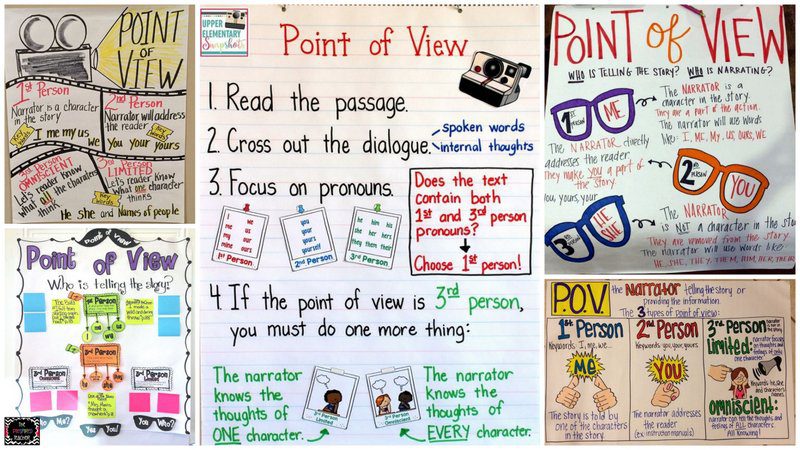Understanding point of view (POV) gives students important insight into authors and their writings. These point of view anchor charts help them remember the differences between first, second, and third person. They also remind children of the various types of third person (limited, omniscient, and objective). Tip: Combine these point of view anchor charts with one or more of these POV videos to deepen their learning!
1. Put on some point of view glasses

Imagine point of view like wearing a pair of glasses! This cute anchor chart is easy to draw and gives kids a great visual.
Source: Hannah Arnold/Pinterest
2. Use engaging details
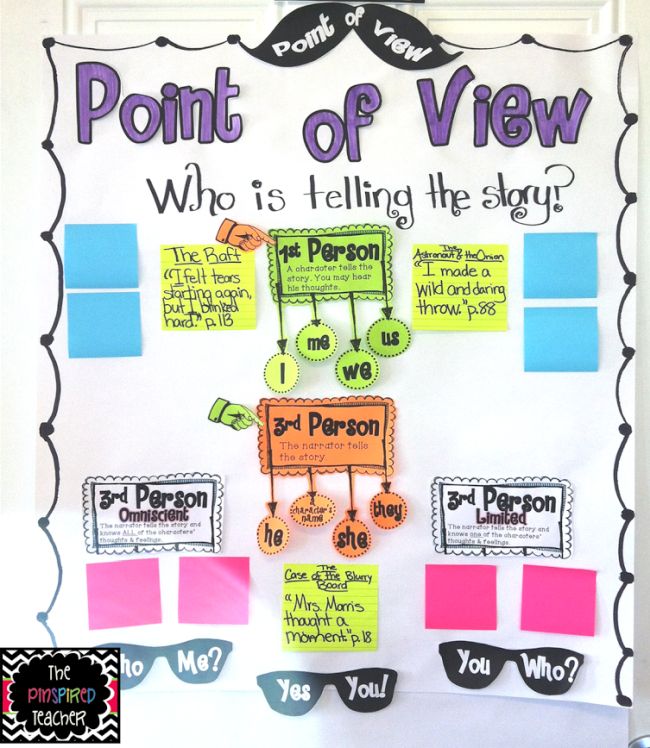
We love how interesting this chart is to look at—it’s sure to draw students’ eyes. It’s part of a set you can buy on Teachers Pay Teachers, if you’re interested.
Source: The Pinspired Teacher
[contextly_auto_sidebar]
3. Ask who is telling the story?
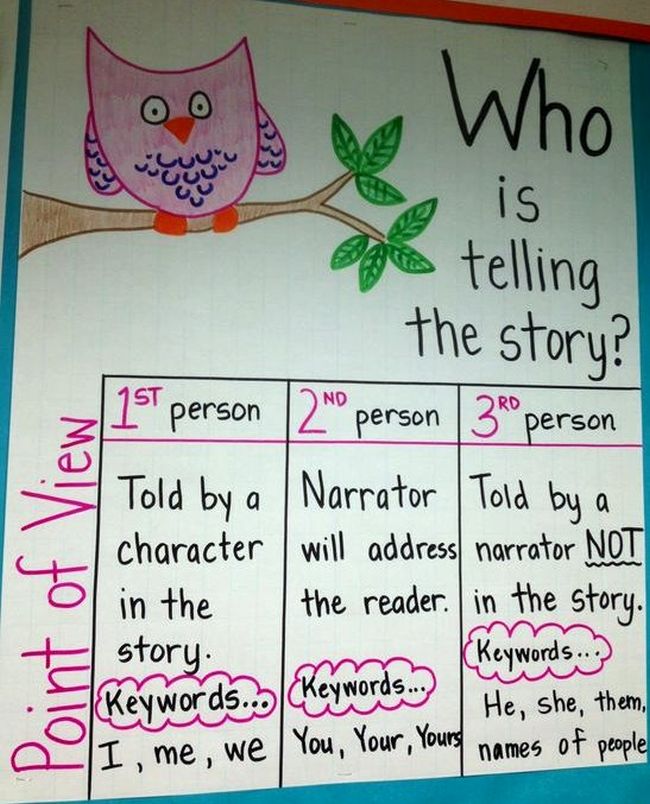
This is one of the most popular point of view anchor charts out there. Draw a cute owl, or print one out and paste it to the chart.
Source: Christine Gish/Pinterest
4. Learn point of view details
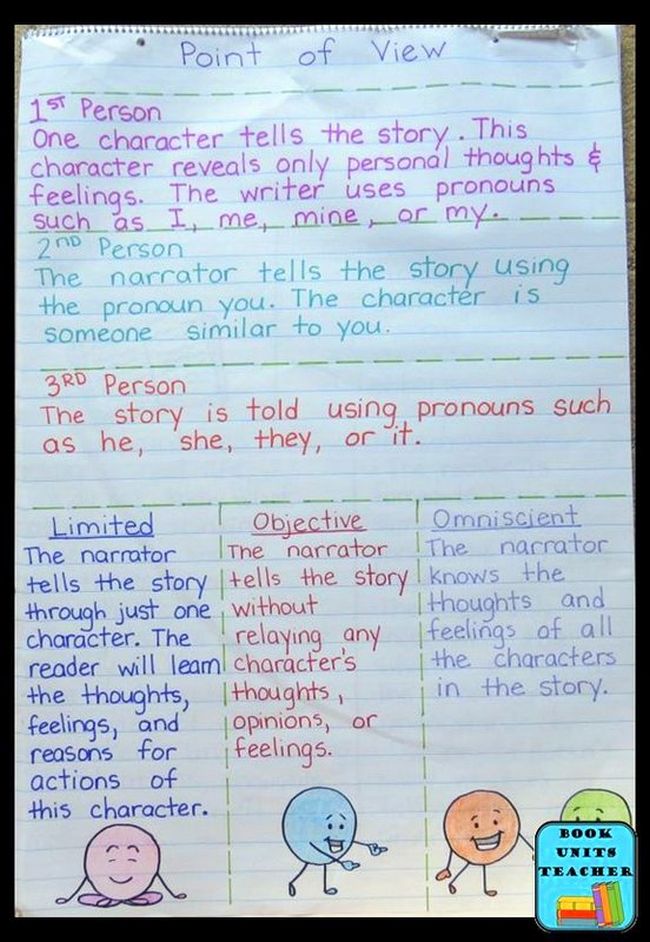
When you’re ready to delve into more details, this basic anchor chart lays out the information your students need to know.
Source: Detailed Point of View/Book Units Teacher
5. Draw them a picture
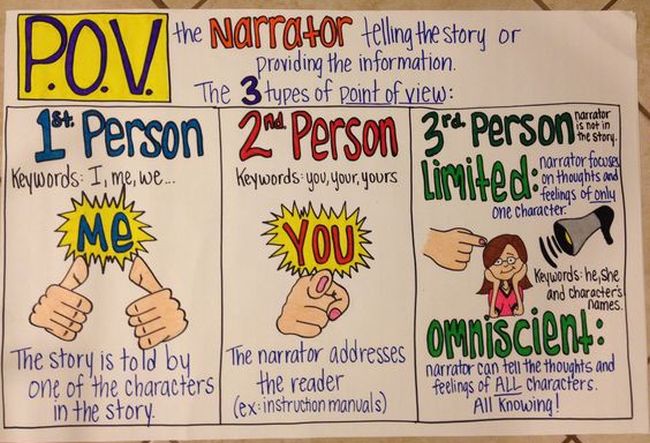
Love to draw? Try this chart! The images help kids remember the differences between the various types of point of view.
Source: Maria Jiminez/Pinterest
6. Look at the pronouns
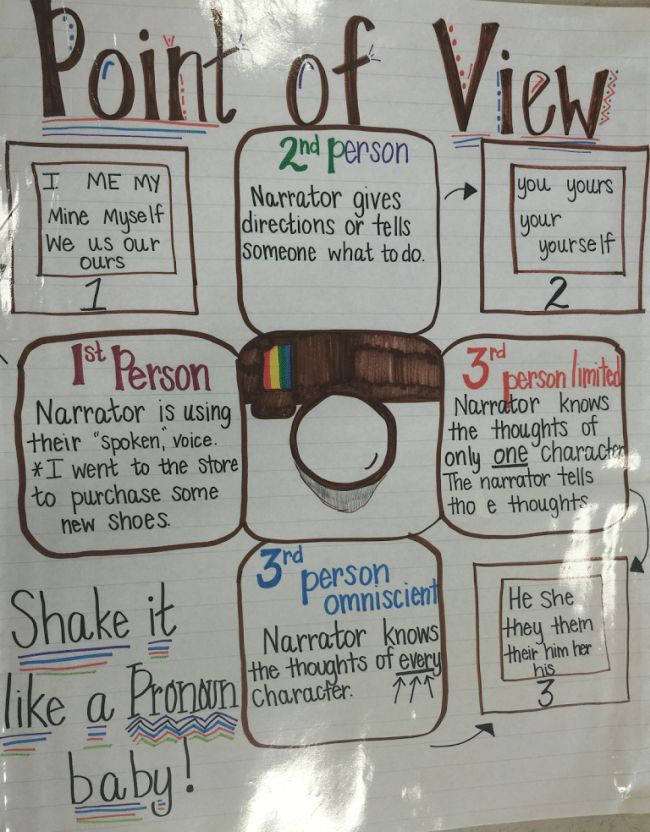
When it comes down to it, pronouns are one of the easiest ways to determine point of view. This chart provides the cues students need to look for.
Source: Kayse Morris
7. Break down the text

If students are having trouble identifying point of view, they can follow these simple steps. It makes the process much easier.
Source: Upper Elementary Snapshots
8. Find the point of view
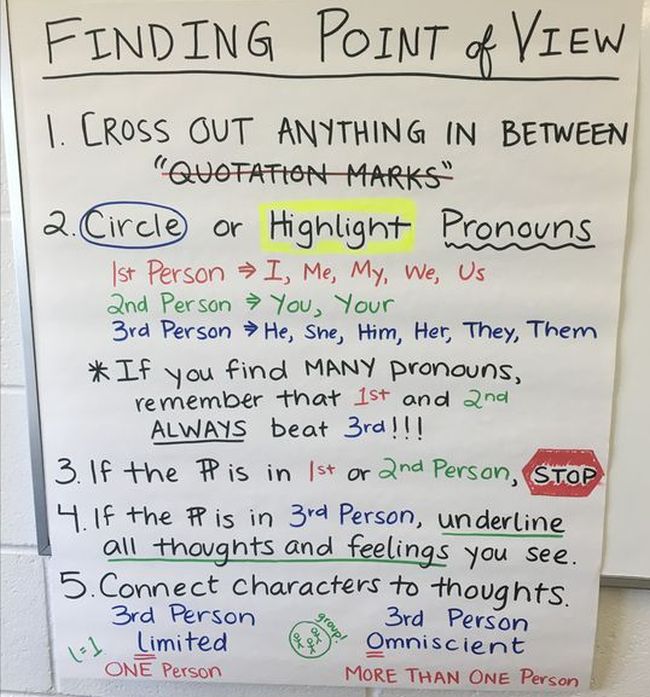
Here’s another way for kids to determine point of view, with some concrete steps they can take as they read.
Source: Jenna/Pinterest
9. Look through the narrator’s eyes

This anchor chart is a simple and clear reminder of the POV types students are most likely to encounter. It’s a perfect reference to hang on the wall.
Source: Emily I Love My Classroom/Pinterest
10. Compare points of view

How cute is this chart? It compares the points of view between the Three Little Pigs and the book The True Story of the Three Little Pigs, which is such a terrific way to teach POV.
Source: First Grade Teacher Lady
11. Provide examples of points of view
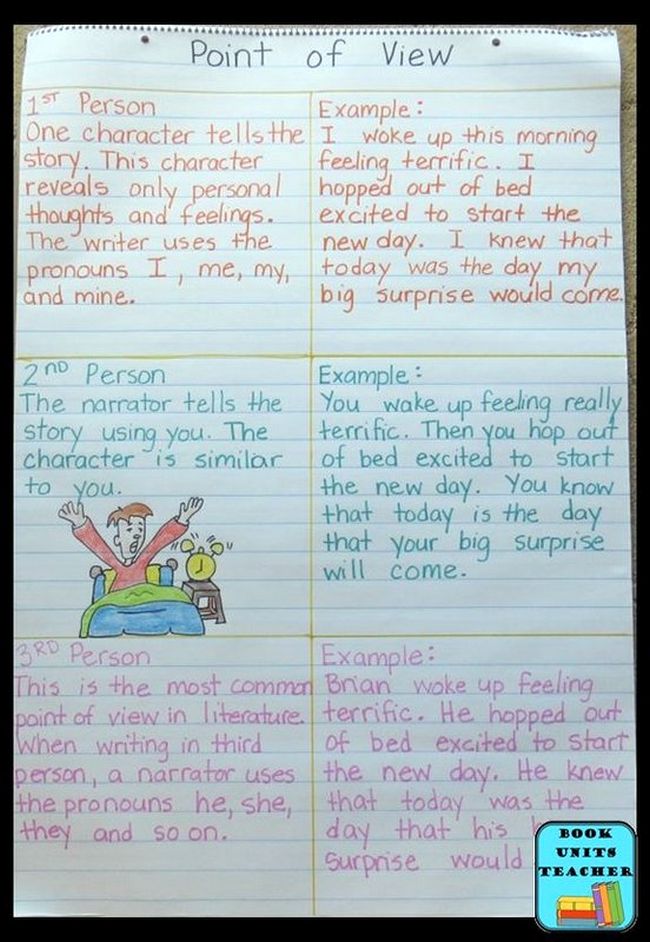
One of the best ways to help students understand POV is to provide examples. Have students help you write the examples, then hang the chart for them to refer to later.
Source: Point of View Examples/Book Units Teacher
12. Give it a movie theme
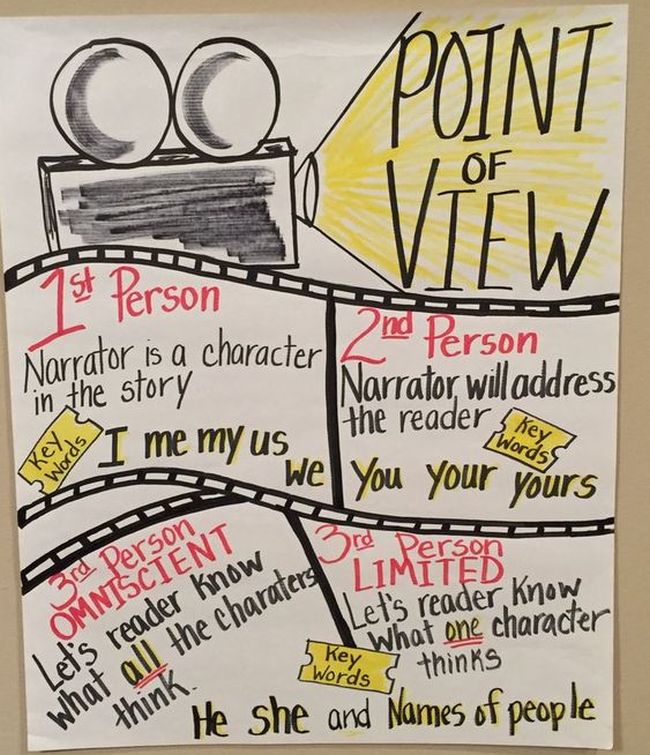
Appeal to film buffs with this smart chart! Consider pairing it with movie or TV clips that demonstrate each of the types of point of view.
Source: Teaching in the Heart of Florida/Pinterest
13. Understand point of view vs. perspective
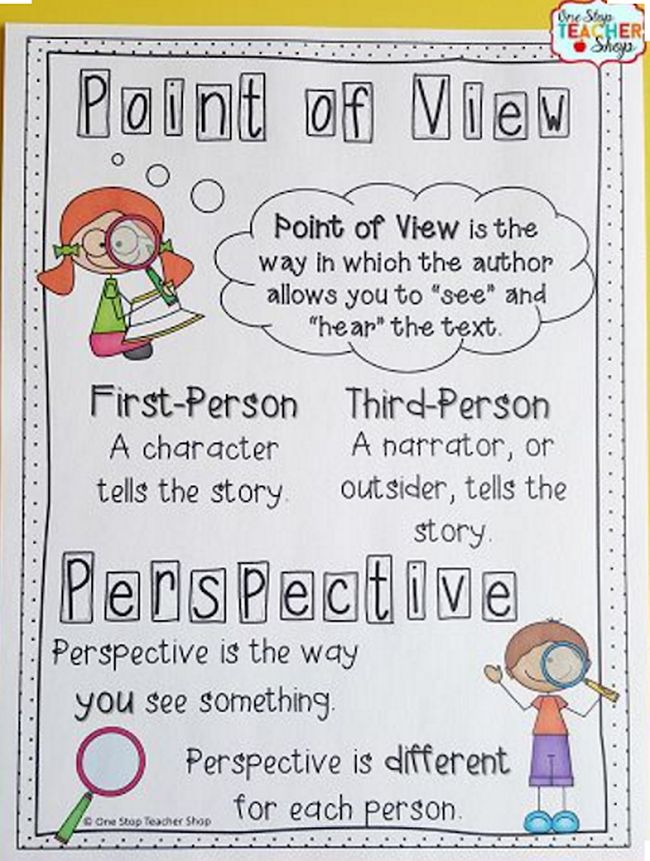
Though they’re sometimes used interchangeably, point of view and perspective are actually different when it comes to literary terms. This anchor chart defines the two.
Source: ELA Anchor Charts
14. Learn how point of view and perspective work together
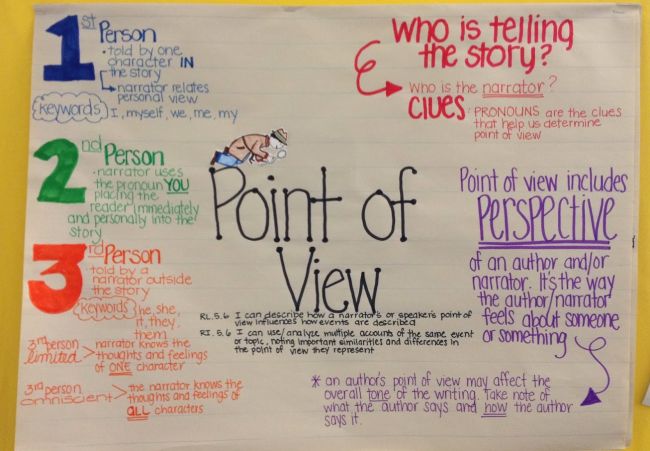
Although they’re not the same thing, point of view and perspective do work together. This detailed chart links the two while explaining their differences.
Source: Dandelions and Dragonflies
15. Add examples and evidence
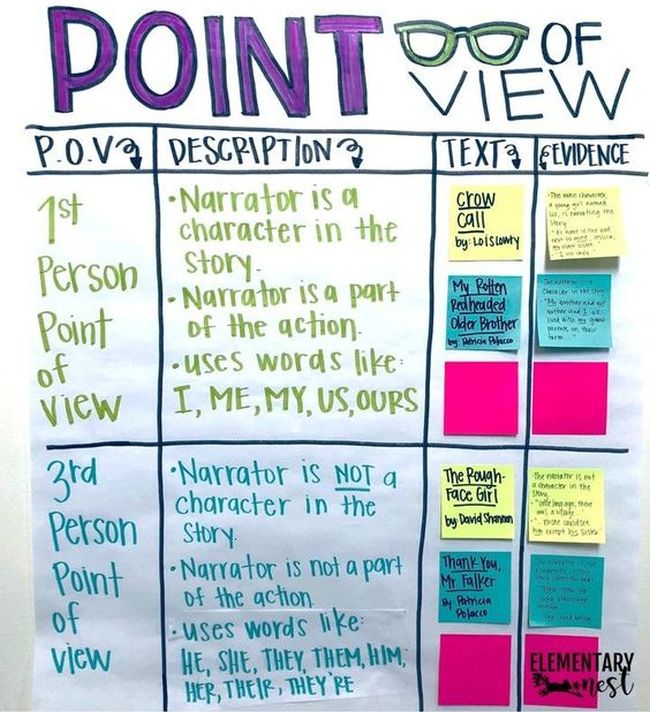
The best anchor charts are active tools in the classroom. This one leaves room for sticky notes that provide examples of each type of point of view.
Source: Elementary Nest
Enjoyed these point of view anchor charts? Don’t miss our collection of the best point of view videos.
Plus, get all the latest teaching tips and ideas straight to your inbox when you sign up for our free newsletters!

